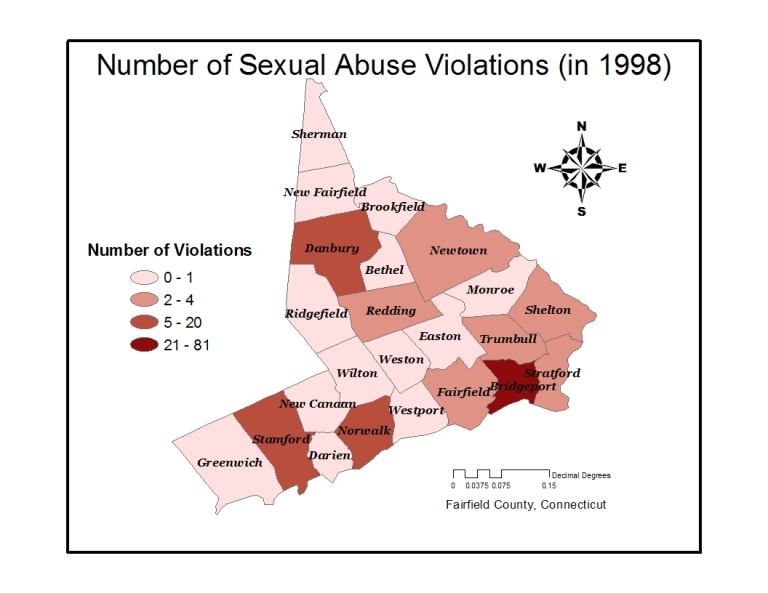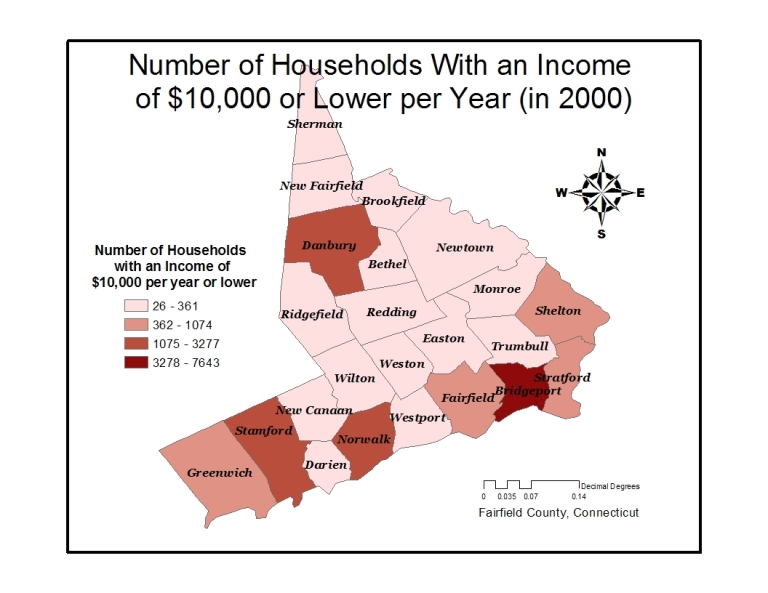CRIME AND ECONOMICS
I. Sexual Abuse Violations
A correlation between the number of sexual abuse violations and AIDS rates is a pertinent one in that it is one indicator of a higher crime rate. More importantly, this particular crime is of a sexual nature and correlates with a coefficient of .92 with Bridgeport and a .89 without. In this case Bridgeport is clearly an outlier as its 81 sexual abuse violations is an astonishing 61 violations higher than the next largest number. Perhaps a greater number of sexual abuse violations reveals a looser sexual environment or one wherein sexual “morals” are not stressed. On the other hand, a greater number of documented violations might be a result of a greater number of police officers in the area due to the presence of a completely different crime relating more directly to AIDS transmission (such as drug abuse, discussed in the following paragraph). While no correlation infers causation, it is very difficult to say why this relationship exists at such a strong level. (Table 8)


II. Adult Drug Abuse Violations
In an area such as Fairfield County where many AIDS cases are a result of injection drug use (42.4% in this case), such a strong correlation (.92) between AIDS rates and adult drug abuse violations seems very plausible. However, looking at a scatter plot of these data reveals that this correlation is strongly affected by the presence of an outlier- Bridgeport. In 1998, this city charged an astonishing 1,391 adults, about 1% of the total population, of a drug violation. Taking away this outlier yields a coefficient of .85. One must remember, however, that the number of drug abuse violations does not represent the total number of drug users in a particular city. Perhaps, as with sexual abuse violations, more arrests occurred for a certain crime simply due to an increased presence of law enforcement. In this case, a direct correlation between the number of injection drug users and AIDS rates might prove more telling. (Table 9)


III. Economic Factors
Traveling through Fairfield County, the discrepancy between the wealth of different towns is sometimes startling. From observing life in these areas, it seems clear that economics might certainly play a role in determining where there might be a greater number of AIDS cases. Therefore, a correlation of -.58 between AIDS rate and median household income seemed relatively weak, especially after removing Bridgeport (generating a coefficient of -.49). Similarly, a look at the number of houses that generated an income of $200,000 or over in 2000 produces an insignificant coefficient. This, however, can be explained by the fact that, while the AIDS epidemic is certainly related in many ways to poverty, money certainly does not shelter one from the disease all together. On the other end of the spectrum, a test on the relationship between the number of households with an income of less than $10,000 logically and AIDS rates yields a higher correlation. In fact, the coefficient is .95, indicating a rather strong relationship. (Table 10)

